
How to Use STEP-UP 1000 W: Examples, Pinouts, and Specs
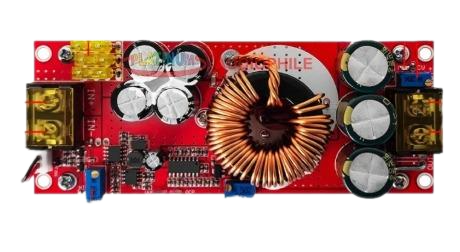
 Design with STEP-UP 1000 W in Cirkit Designer
Design with STEP-UP 1000 W in Cirkit DesignerIntroduction
The STEP-UP 1000 W, manufactured by DEWA with part ID AUDI VARIASI, is a high-performance step-up transformer or converter designed to increase voltage from a lower level to a higher level. With a power handling capacity of up to 1000 watts, this component is ideal for applications requiring efficient voltage conversion in high-power systems.
Explore Projects Built with STEP-UP 1000 W
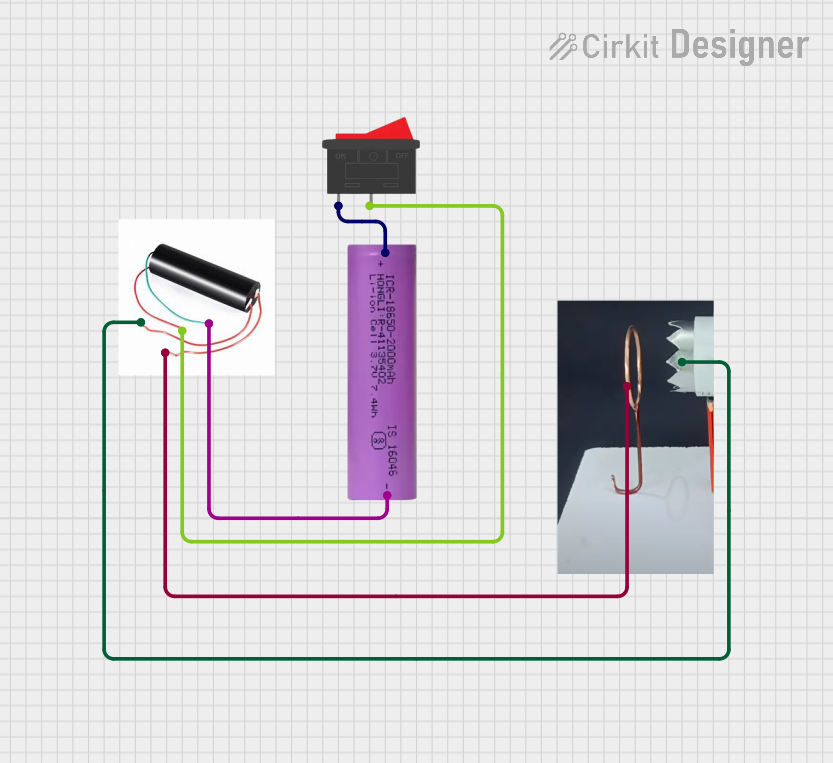
 Open Project in Cirkit Designer
Open Project in Cirkit Designer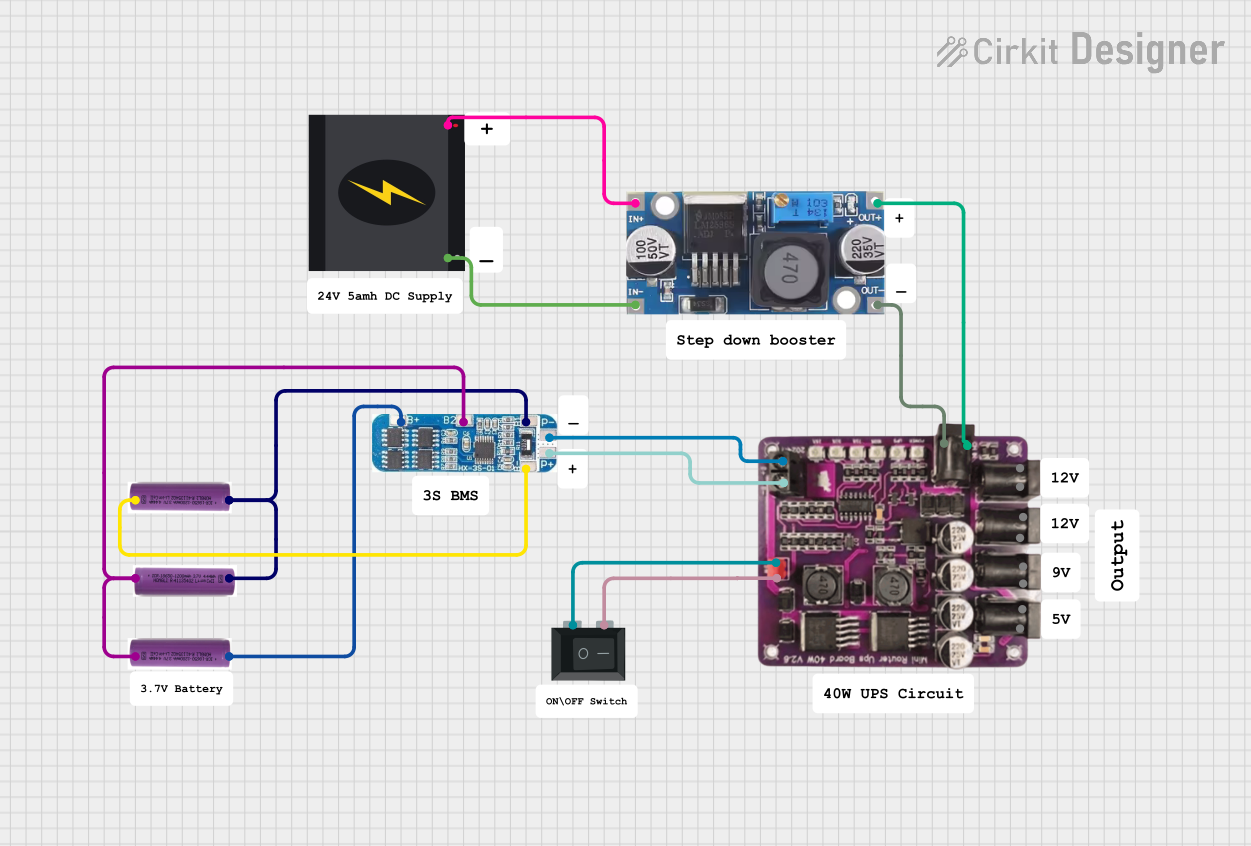
 Open Project in Cirkit Designer
Open Project in Cirkit Designer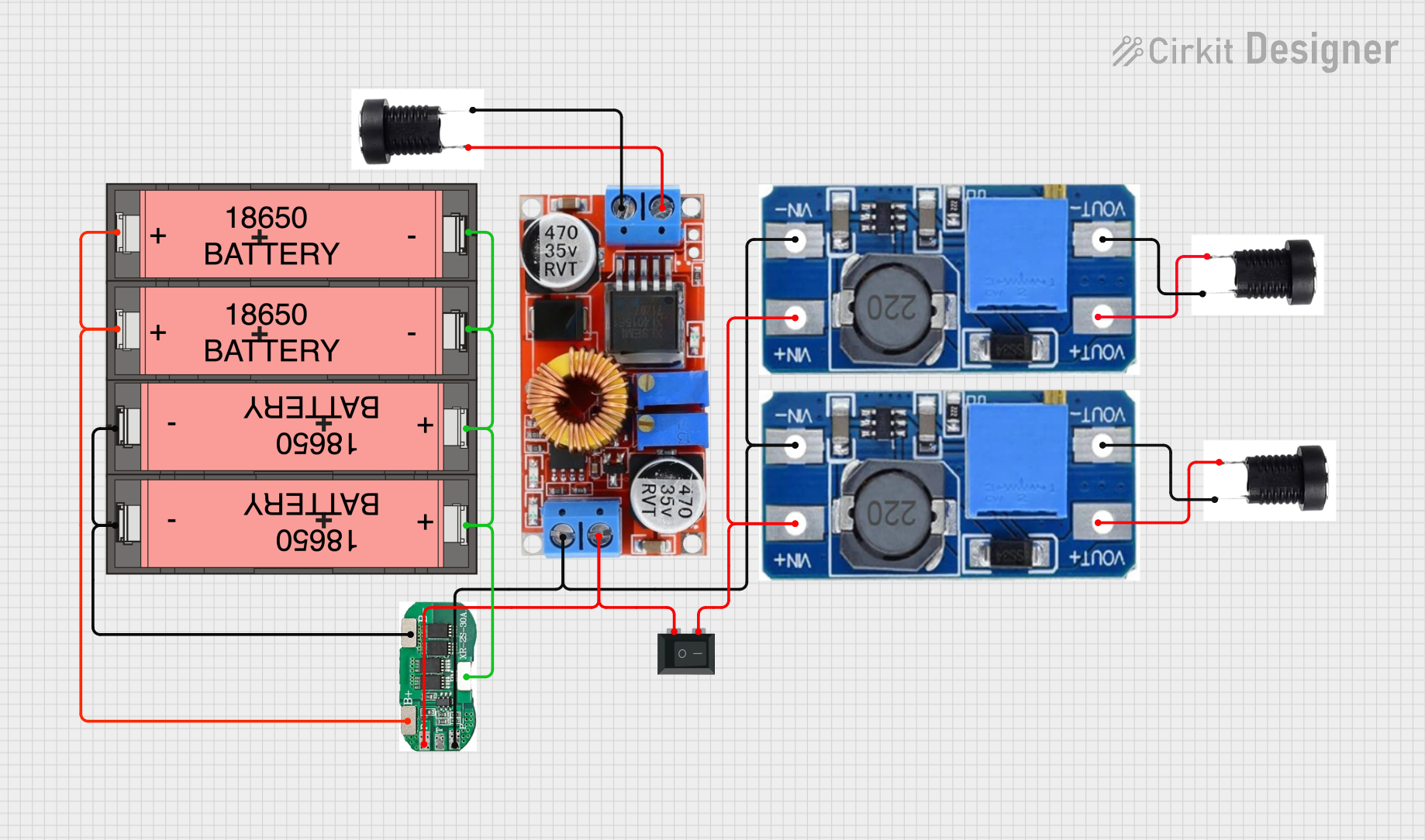
 Open Project in Cirkit Designer
Open Project in Cirkit Designer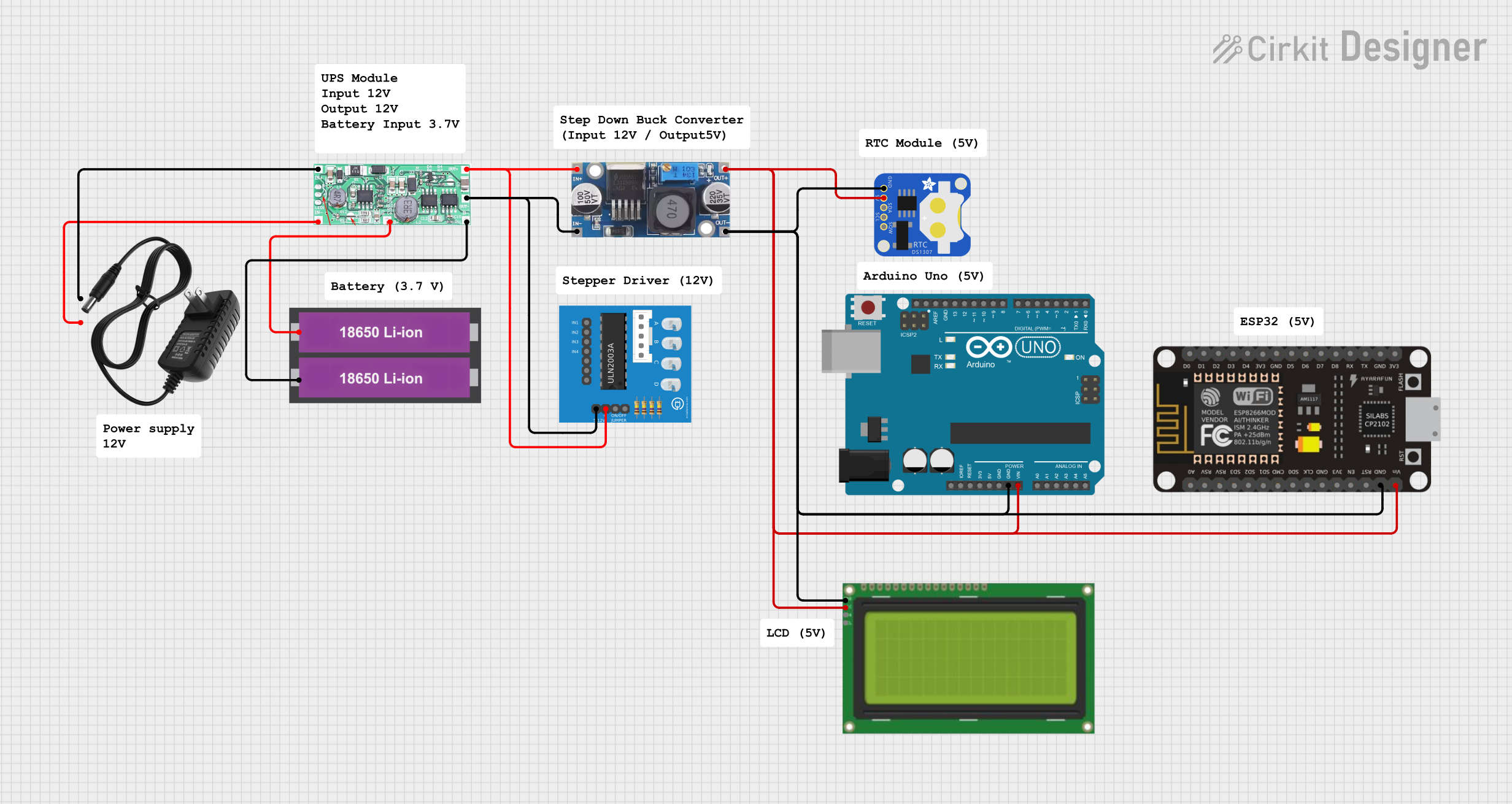
 Open Project in Cirkit Designer
Open Project in Cirkit DesignerExplore Projects Built with STEP-UP 1000 W

 Open Project in Cirkit Designer
Open Project in Cirkit Designer
 Open Project in Cirkit Designer
Open Project in Cirkit Designer
 Open Project in Cirkit Designer
Open Project in Cirkit Designer
 Open Project in Cirkit Designer
Open Project in Cirkit DesignerCommon Applications and Use Cases
- Powering high-voltage devices from low-voltage sources
- Renewable energy systems (e.g., solar or wind power setups)
- Industrial equipment requiring voltage step-up
- Laboratory and testing environments
- Portable power systems and inverters
Technical Specifications
The STEP-UP 1000 W is designed to deliver reliable performance under various conditions. Below are its key technical details:
| Parameter | Value |
|---|---|
| Input Voltage Range | 10 V to 60 V DC |
| Output Voltage Range | 12 V to 120 V DC |
| Maximum Power Output | 1000 W |
| Efficiency | Up to 95% |
| Operating Temperature | -20°C to 85°C |
| Dimensions | 100 mm x 70 mm x 40 mm |
| Weight | 300 g |
Pin Configuration and Descriptions
The STEP-UP 1000 W features a simple pin layout for easy integration into circuits:
| Pin Name | Description |
|---|---|
| VIN+ | Positive input voltage terminal |
| VIN- | Negative input voltage terminal (ground) |
| VOUT+ | Positive output voltage terminal |
| VOUT- | Negative output voltage terminal (ground) |
| ADJ | Voltage adjustment pin (optional, for fine-tuning) |
Usage Instructions
How to Use the STEP-UP 1000 W in a Circuit
Connect the Input Voltage:
- Attach the positive terminal of your DC power source to the
VIN+pin. - Connect the negative terminal of your DC power source to the
VIN-pin.
- Attach the positive terminal of your DC power source to the
Connect the Output Load:
- Attach the positive terminal of your load to the
VOUT+pin. - Connect the negative terminal of your load to the
VOUT-pin.
- Attach the positive terminal of your load to the
Adjust the Output Voltage (if needed):
- Use the
ADJpin to fine-tune the output voltage. This can be done by connecting a potentiometer or resistor as specified in the datasheet.
- Use the
Power On:
- Ensure all connections are secure and within the specified voltage and power limits.
- Turn on the input power source to activate the step-up converter.
Important Considerations and Best Practices
- Input Voltage Range: Ensure the input voltage is within the specified range (10 V to 60 V DC). Exceeding this range may damage the component.
- Heat Dissipation: The STEP-UP 1000 W can generate heat during operation. Use a heatsink or active cooling if operating near the maximum power rating.
- Load Compatibility: Verify that the connected load does not exceed the maximum power output of 1000 W.
- Polarity: Double-check the polarity of all connections to avoid damage to the component or connected devices.
- Voltage Adjustment: If using the
ADJpin, ensure the adjustment is gradual to prevent sudden voltage spikes.
Example: Using STEP-UP 1000 W with an Arduino UNO
The STEP-UP 1000 W can be used to power devices in Arduino projects requiring higher voltages. Below is an example of how to integrate it into a circuit:
// Example: Controlling a high-voltage device with Arduino and STEP-UP 1000 W
// Ensure the input voltage to the STEP-UP 1000 W is within the specified range.
const int controlPin = 7; // Pin to control the high-voltage device
void setup() {
pinMode(controlPin, OUTPUT); // Set the control pin as an output
digitalWrite(controlPin, LOW); // Start with the device turned off
}
void loop() {
digitalWrite(controlPin, HIGH); // Turn on the high-voltage device
delay(5000); // Keep it on for 5 seconds
digitalWrite(controlPin, LOW); // Turn off the high-voltage device
delay(5000); // Wait for 5 seconds before turning it on again
}
Note: Ensure the high-voltage device connected to the STEP-UP 1000 W is compatible with the output voltage and current.
Troubleshooting and FAQs
Common Issues and Solutions
No Output Voltage:
- Cause: Incorrect input connections or insufficient input voltage.
- Solution: Verify the input voltage is within the specified range and check the polarity of the connections.
Overheating:
- Cause: Operating near or above the maximum power rating without proper cooling.
- Solution: Add a heatsink or active cooling to dissipate heat effectively.
Fluctuating Output Voltage:
- Cause: Unstable input voltage or improper load connection.
- Solution: Ensure the input voltage is stable and the load is securely connected.
Component Damage:
- Cause: Exceeding voltage or power limits, or incorrect polarity.
- Solution: Replace the component and ensure all connections and operating conditions are within specifications.
FAQs
Q1: Can the STEP-UP 1000 W be used with AC input?
A1: No, the STEP-UP 1000 W is designed for DC input only. Using AC input will damage the component.
Q2: How do I calculate the required input current?
A2: Use the formula:
[
I_{in} = \frac{P_{out}}{V_{in} \times \eta}
]
Where ( P_{out} ) is the output power, ( V_{in} ) is the input voltage, and ( \eta ) is the efficiency (e.g., 0.95 for 95%).
Q3: Can I use the STEP-UP 1000 W for battery charging?
A3: Yes, but ensure the output voltage and current are suitable for the battery type and follow proper charging protocols.
Q4: Is the output voltage adjustable?
A4: Yes, the output voltage can be adjusted using the ADJ pin. Refer to the datasheet for detailed instructions.
By following this documentation, users can effectively integrate the STEP-UP 1000 W into their projects and troubleshoot common issues with ease.